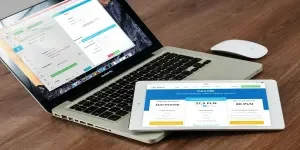In the latest episode of the B2B Breakthrough Podcast, host Ciara Cristo sits down with Carmine Denisco, entrepreneur, inventor, and product development expert, to demystify intellectual property (IP) protection for inventors, startups, and small business owners. From the strategic use of provisional patents to understanding why branding might be more protective than a lawsuit, Carmine shares real-world insights that challenge the conventional wisdom surrounding patents.
Whether you’re bringing your first product to market or managing a growing product line, this episode is packed with actionable advice that could save you time, money, and legal headaches.
Table of Contents
IP Protection: A Strategic Tool, Not a Shield
The Power of the Provisional Patent
Forget Global—Start with the US Market
Design Patents: Fast, Effective, and Amazon-Friendly
Innovation Over Litigation: A Smarter Way Forward
Final Thoughts: IP is a Means, Not an End
IP Protection: A Strategic Tool, Not a Shield
Early in the conversation, Carmine urges entrepreneurs to stop viewing IP protection as an automatic or immediate necessity. Instead, he frames it as a strategic tool that should be used thoughtfully based on where your product is in its development lifecycle.
“Many people rush into patents because they think they have to, but your product will evolve. If you patent too early, you might be protecting a version that never hits the shelves.”
Rather than spending thousands upfront to secure a full utility patent, Carmine advises working with experienced product developers to determine the right time to seek protection. In many cases, focusing on product quality, branding, pricing strategy, and speed to market can provide a stronger defense against competitors than legal paperwork alone.
The Power of the Provisional Patent
What is one of the most valuable tools in an inventor’s arsenal? The provisional patent.
At just under $100, a provisional patent offers an affordable way to establish “patent pending” status while keeping the inner workings of your product confidential. This 12-month grace period gives you time to iterate, refine, and test your product, without the pressure of rushing into an expensive utility filing.
“You’re just holding your spot in line, you thought of it first, you filed first—and you keep your ‘special sauce’ private while getting your product market-ready.”
This approach also buys time for public disclosures (such as crowdfunding or marketing campaigns) without compromising your ability to pursue a full patent later. It’s a smart move for early-stage entrepreneurs who need both protection and flexibility.
Forget Global—Start with the US Market
Many first-time inventors assume they need to protect their product worldwide, but Carmine says that’s a costly mistake.
“An international patent can run you $15,000 to $20,000 per country, not including maintenance fees,” he warns. “That adds up fast—and it’s unnecessary for most startups.”
Instead, he recommends first focusing on strong IP protection in the U.S. market. Thanks to global patent treaties, U.S. patents are often honored internationally, especially in countries with established trade relationships. More importantly, most foreign customers still buy through U.S.-based platforms or distributors, meaning your U.S. IP rights often provide sufficient coverage.
The key takeaway? Unless you’re already scaling globally, establishing a strong domestic presence is smarter than worrying about the rest of the world.
Design Patents: Fast, Effective, and Amazon-Friendly
Toward the end of the episode, Carmine highlights a rising trend in the IP world: the increasing importance of design patents.
Unlike utility patents, which protect how something works, design patents protect how something looks. And in today’s fast-paced, visually driven e-commerce world, especially on platforms like Amazon, appearance matters.
“Design patents are faster and easier to get,” Carmine says. “If someone’s knocking off your product visually, it’s much easier to prove infringement.”
Because design patents focus on visual similarities, they’re particularly effective at deterring copycats on online marketplaces, where knockoffs often mimic the exact look of a successful product. They’re also quicker to file and cheaper than utility patents, making them an ideal option for entrepreneurs needing fast, practical protection.
Innovation Over Litigation: A Smarter Way Forward
One of the most eye-opening takeaways from the episode is the cost of enforcing a patent.
“If you want to sue someone for infringement, just to get started in patent court can cost you upwards of $100,000,” Carmine says.
Instead of relying solely on the legal system, he suggests building a resilient brand, offering outstanding product quality, and using smart pricing strategies to outcompete knockoffs. Legal protection should still be part of your business plan, not your entire one.
“You want the IP,” he clarifies, “especially if you’re going to license or sell your idea later. But don’t rely on it. Rely on how you execute.”
Final Thoughts: IP is a Means, Not an End
Throughout the episode, Carmine returns to one central theme: treat intellectual property as a business strategy, not a box to check.
Filing a patent won’t protect you from a poor product, weak branding, or a lack of execution. But used wisely, tools like provisional and design patents can give you a meaningful edge, especially when paired with a strong market strategy and customer-focused design.
If you’re an inventor, product developer, or entrepreneur looking to bring something new to market, this episode is a must-listen. You’ll walk away with a clearer understanding of when to file, how to protect your idea affordably, and why speed, quality, and branding are your best tools in a crowded market.
Need help deciding if a provisional patent is right for you? Or how to protect your idea without overspending? This episode offers a real-world roadmap from someone who’s helped hundreds of products succeed. Don’t miss it.



